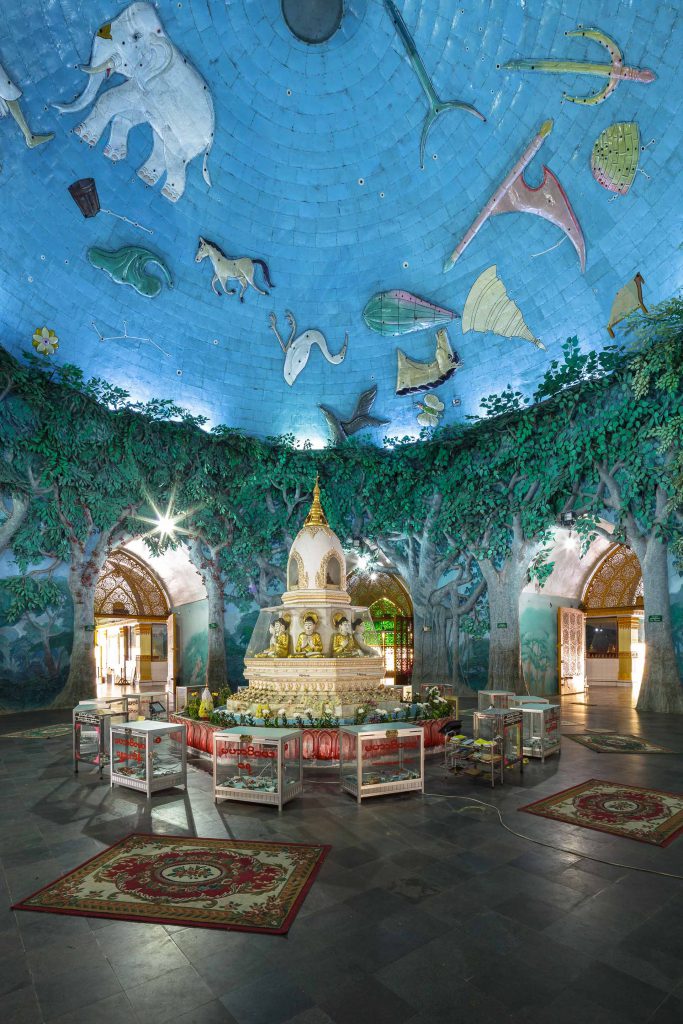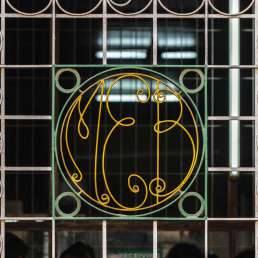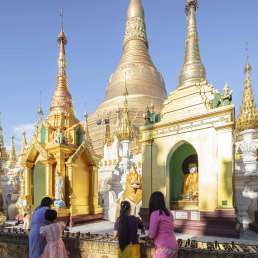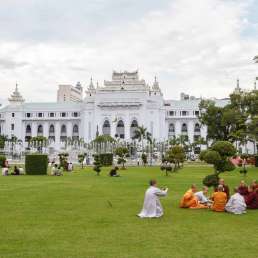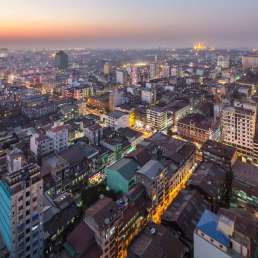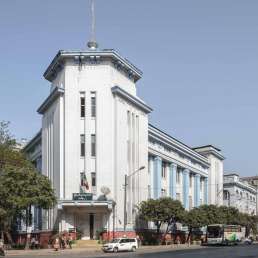Address: U Htaung Bo Road
Year built: 1980-1986
Architect: Unknown
Just opposite the Shwedagon Pagoda’s southern entrance lies another arresting Buddhist place of worship. But the Maha Wizaya Pagoda differs markedly from its bigger and much older neighbour. The main approach from Shwedagon Pagoda Road takes visitors to a rectangular pond with a bridge leading to the pagoda. The hti crowning the golden stupa has 11 tiers, which is two more than the Shwedagon. The pagoda contains Buddhist relics given to Burma by the King of Nepal. Like the Botataung and the Kaba Aye Pagodas, the inside of the stupa is hollow. The Nepali relics are displayed here, in a central shrine. The light-blue dome is adorned with depictions of animals. Painted trees grow up the walls, their leaves made from plastic. Carpets surrounding the shrine are there for visitors to sit on.
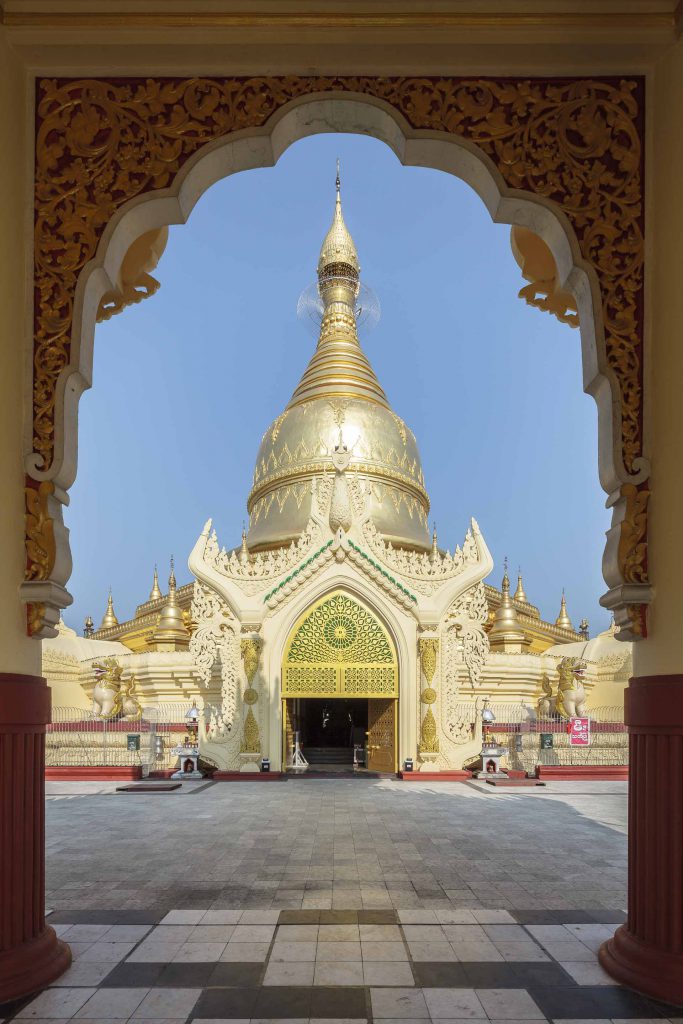
The Maha Wizaya Pagoda was built on Ne Win’s orders. As he grew older, the General distanced himself from his earlier commitment to secularism. To some, this was a clear attempt to portray himself as a pagoda-building leader in the style of Burmese kings. Before the “General’s Pagoda” was finished, rumours circulated that upon its opening, Ne Win would be overthrown. He in fact stayed in power for two and a half years after the pagoda’s opening ceremony in February 1986. The pagoda was built by scores of Burmese people from all walks of life. The regime of the time called this “meritorious voluntary service”. Human rights activists called it forced labour.
